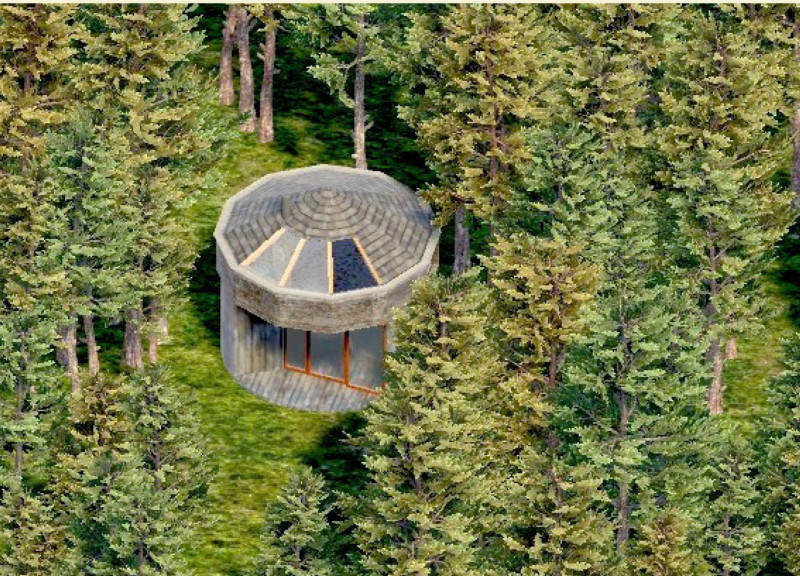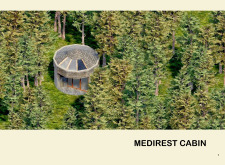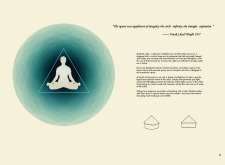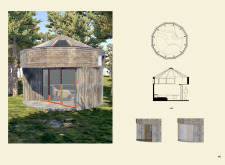5 key facts about this project
At its core, the Medirest Cabin represents more than just a physical structure; it is a sanctuary that encourages mindfulness and a deeper connection to one's self and nature. The circular form of the cabin echoes themes of unity and infinity, embodying an architectural language that evokes a sense of peace and serenity. This design choice highlights the importance of creating environments where individuals can retreat from the hectic pace of daily life, offering a space that nurtures both personal and collective contemplation.
The unique functionality of the Medirest Cabin is rooted in its flexible interior layout, which accommodates various activities, from solitary meditation to group gatherings. The cabin's circular base allows for an inclusive environment, where participants can comfortably engage with one another while maintaining a focus on personal introspection. Ample natural light filters through expansive glass panels, enhancing the interior's warmth and ensuring a continuous connection with the exterior landscape. This thoughtful integration of natural elements fosters an atmosphere where users can fully engage with their surroundings.
The architectural design is characterized by a polyhedral roof that not only serves as a visual focal point but also enhances the cabin's functionality by allowing for effective natural ventilation. This innovative approach reduces reliance on mechanical systems, aligning with sustainable building practices that are increasingly essential in today's architecture. The choice of materials further emphasizes this commitment to sustainability; the structure predominantly features timber and thermowood, which are known for their natural aesthetic and durability in varied weather conditions. The use of fiberglass for the roof and strategically placed openings for ventilation signifies a progressive understanding of environmental control, balancing comfort with ecological responsibility.
In addition to its material choices, the Medirest Cabin employs a composting toilet system, representing a practical yet innovative solution to waste management. This feature underscores the project's overall ethos of ecological sensitivity and minimal environmental impact while ensuring that the users can maintain a clean and nurturing habitat. Each design element has been carefully considered not only for aesthetic appeal but also for its functional performance, demonstrating a cohesive synergy between utility and beauty that defines contemporary architecture.
The Medirest Cabin stands out for its unique design approaches, which prioritize user experience and environmental connection. By incorporating organic shapes and flexible spaces within its architectural framework, the cabin promotes a sense of fluidity that aligns with its purpose as a mindfulness retreat. The commitment to using sustainable materials and environmentally conscious practices reflects an ongoing shift in architecture towards greater responsibility in design, paving the way for future projects that prioritize ecological harmony.
By focusing on the integration of architectural ideas rooted in sustainability and mindfulness, the Medirest Cabin offers an insightful exploration of how architecture can be both functional and resonant with deeper human experiences. For those interested in delving deeper into this project, exploring the architectural plans, architectural sections, and various architectural designs will provide a richer understanding of how these concepts manifest in the built environment. Engaging with the visual aspects of the design will further illuminate the unique characteristics that make the Medirest Cabin a remarkable example of contemporary architecture.


























